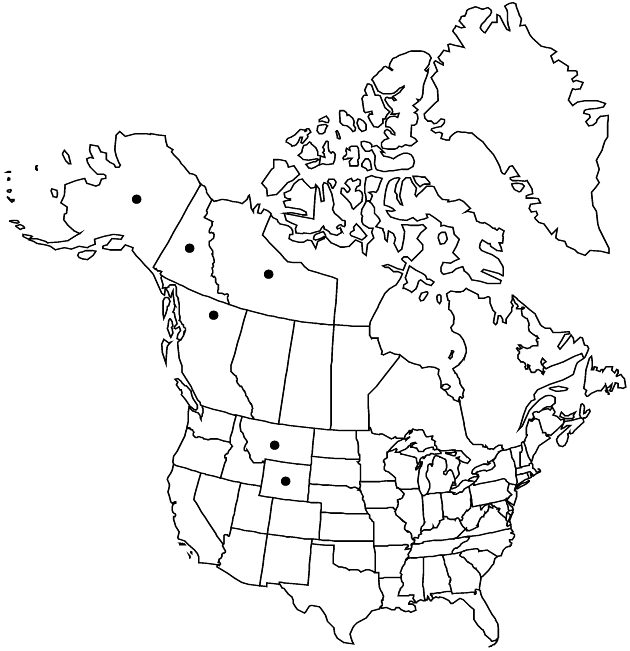Difference between revisions of "Tephroseris lindstroemii"
Bot. Not. 128: 520. 1976.
FNA>Volume Importer |
FNA>Volume Importer |
(No difference)
| |
Revision as of 18:41, 24 September 2019
Perennials, 10–25(–50) cm (white or gray, floccose- or lanate-tomentose, hairs somewhat matted, sometimes with closely appressed hairs beneath the matted hairs, unevenly glabrate, especially proximal stems, adaxial faces of leaves, and phyllaries; rhizomes creeping or suberect). Stems single or loosely clustered. Leaves basal and cauline; petioles winged (passing into blades); blades lanceolate to ovate, 3–6(–10) × 1–2.5 cm, margins wavy or subentire to denticulate (cauline similar, narrower, sessile, weakly-clasping, bractlike). Heads 1–4(–6 +). Involucres ± abruptly contracted to peduncles. Phyllaries usually 21, purplish (most of lengths, glabrate), (5–)7–10 mm. Ray florets usually 13 or 21; corolla laminae 10–15(–20) mm. Disc florets 50–80+; corollas orange or orange-yellow. Cypselae pubescent; pappi white. 2n = 46, 48.
Phenology: Flowering Jun–Aug.
Habitat: Alpine meadows, open tundra
Elevation: 1000–3200 m
Distribution

B.C., N.W.T., Yukon, Alaska, Mont., Wyo., e Asia (Russian Far East).
Discussion
For Russia, S. S. Kharkevich (1985+, vol. 6) and I. M. Krasnoborov et al. (1987+, vol. 13) treated this taxon as T. tundricola subsp. lindstroemii. It has been widely known in American literature as Senecio fuscatus, a misapplied name.
Selected References
None.